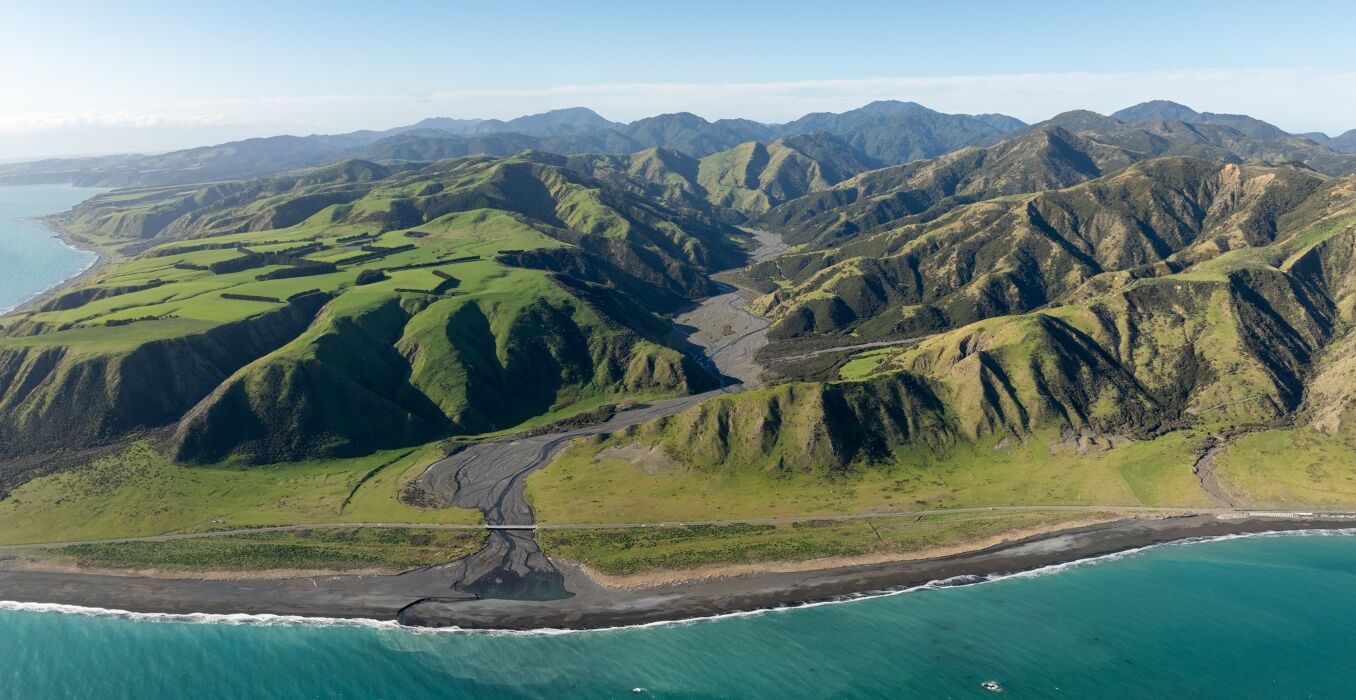
Country -
Palliser Bay Station has opportunity to unlock
A sizeable coastal Wairarapa sheep and beef breeding and finishing property with potential for diversification, and elevated flat terraces that look out across the Cook Strait to the Kaikōura ranges, is for sale.
Palliser Bay Station in Cape Palliser Road, 51km southwest of Martinborough township and 125km from the Wellington CBD, has attracted a good level of early enquiry since recently launching to the market, according to agents.
The station has potential for eco-tourism ventures based around walking trails and hunting, along with carbon sequestration credentials, and opportunities to leverage the location further for honey production and paddock to plate partnerships with local restaurants.
The 3,719.29ha property has around 7km of coastline and is held in five titles. It has been owned by the Crawford family since the early-1990s when they purchased it from Farry McLeod, whose family had owned the station for three generations.
There’s a unique balance of country including the intensive terraced flats, to large clear hill country, mixed scrub, river basins and regenerating and mature native forest.
Tim Wynne-Lewis, Bayleys Havelock North and Andrew Smith, Bayleys Wairarapa are marketing Palliser Bay Station via a tender campaign closing Thursday 14th November, unless sold prior.
While farmed faithfully as a sheep and beef operation, and having additional revenue from mānuka honey production and carbon sequestration, tangible additional value could also be realised, says Wynne-Lewis.
“The property has compelling ecotourism, hunting, and recreational tourism credentials, and has long been popular with local hunters by arrangement with its owners.
“Carbon farming could be further progressed on the less-productive parts of the station and the mānuka honey side of things could also be ramped up.
“Underpinning all of this is the sheer scale of the station and the coastal location which is outstanding.”
Palliser Bay Station has had continuity of management for more than 30 years, with its current manager following in his father’s footprints in overseeing the farm, and potentially keen to remain under new ownership.
That’s an important consideration for a buyer keen to secure a stake in rural New Zealand, but without the requisite local knowledge and broad farming experience to run the station day-to-day, says Smith.
“This is a legacy property that has local significance and has been very important to a lot of people across generations.
“It has been owned by a series of passionate custodians and when traversing the station, it’s easy to see how it could really ‘get under your skin’, with hunters, beekeepers, and archaeologists all drawn to the vast property, too.”
Pre-pandemic, Palliser Bay Station had a direct-to-consumer contract supplying The Portlander Bar and Grill in Wellington CBD with lamb, and this paddock to plate philosophy is one that could be resurrected under new ownership.
“Food, and in particular, meat, produced close to the coast is deemed to have a special quality and the general provenance of food is increasingly important, as people seek to know where and how their food is produced,” says Wynne-Lewis.
“As there is an active and diverse dining-out culture in nearby Martinborough and in Wellington itself, Palliser Bay beef and lamb could arguably find a ready market.”
Wynne-Lewis says there’s been a noticeable uplift in enquiry and activity in the broader rural sector in recent months.
“Whether this is because it’s spring and people are enjoying the sun on their backs, or it’s the promise of further drops in interest rates – there is confidence returning to the market and tangible interest being shown in rural assets.”
Palliser Bay Station has a good fertiliser history and water supply, and is well-fenced and laned. Supporting infrastructure includes woolshed and covered sheep yards, workshop, stables, implement shed, two cattle yards, three satellite sheep yards, irrigation, stock water systems, fertiliser bin and airstrip.
Dwellings comprise a three-bedroom manager’s house and a shepherds’ cottage, both with exceptional sea views, and two hunters’ huts. In addition, there are multiple potential building sites.
For an extended time, the land around the southern coast of Wairarapa was privately held by the Te Whāiti whanau of Ngāti Kahungunu Wairarapa. Palliser Bay Station’s origins are entrepreneurial by nature, as in 1927, the estate of Irāia Te Whāiti offered two parcels of land for sale and these were purchased by enterprising 20-year-old Merdoch McLeod, who also took on the lease of a neighbouring block.
Access back then was either by boat or a rough ride around the coast, and the sprawling property was quite an undertaking for the young McLeod, who subsequently went into partnership with Bill McDougall, who later acquired what is now known as the Kawakawa Block.
Merdoch’s son, Malcolm, took over the property from his father and also purchased the lease block in the 1960s. In time, Malcolm’s son, Farry picked up the reins and farmed Palliser Bay Station until it was purchased in several titles, including the Kawakawa block, by Simon Crawford in the early-1990s.
Two other sizeable properties neighbour Palliser Bay Station, with Palliser Ridge and Kawakawa Station both having many strands to their operational bows including coastal walking trails, boutique accommodation and honey production, while luxury lodge Wharekauhau Country Estate is nearby.
The Palliser Bay area also boasts enviable recreational fishing and diving opportunities, several well-known surf breaks, and the red-and-white striped Cape Palliser lighthouse further around the southern coast.